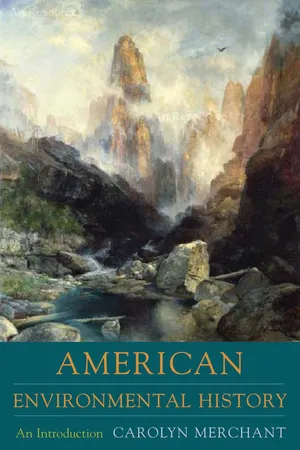History
Headright System
The Headright System was a land distribution system used in colonial Virginia in the 17th century. It granted 50 acres of land to anyone who paid for their own or another person's passage to the colony. This system encouraged the immigration of indentured servants and helped to increase the population of Virginia.
Written by Perlego with AI-assistance
Related key terms
Related key terms
1 of 4
Related key terms
1 of 3
3 Key excerpts on "Headright System"
- eBook - ePub
Mother Earth
Land Grants in Virginia, 1607-1699
- Walter Stitt Robinson(Author)
- 2009(Publication Date)
- Perlego(Publisher)
The combined variations in the operation of the Headright System resulted in the distortion, if not destruction, of its original concepts. The system continued to bring immigrants into the colony which had been a very important purpose when inaugurated. But the abuses threw out of balance the relation between patented land and the number of people in the colony; and furthermore through perversion of the system, speculation in land was not prevented and there resulted large areas of wholly uncultivated and uninhabited lands to which title had been granted. The headright was also originally intended to apply to inhabitants of the British Isles, but by the middle of the seventeenth century the names of persons imported from Africa appeared occasionally as the basis for headright, and by the last decade of the century they were frequently found.The distortion of the Headright System was done with considerable public approval and in some ways reflected the evolution of economic development that seemed to demand a more convenient and less expensive method for obtaining title to large areas of unoccupied land. As the population of the colony increased and as the labor supply became more plentiful, there was a rather widespread demand to be able to obtain additional land, particularly adjacent undeveloped tracts, without having to import an additional person for every fifty acres. Partly through this demand, impetus was given to the custom, which was not at first sanctioned by law, to permit the granting of patents by simply paying a fee in the secretary's office.While the Headright System was designed to maintain some proportion between the population of the colony and the amount of land patented, it was also designed to stimulate the migration of immigrants to the colony. Therefore, under the system it was possible for individuals who would engage in transporting or financing the transportation of immigrants to obtain large areas of land. This trend was started under the company; and in the four years prior to 1623, forty-four patents of 5,000 acres each were awarded to persons who were to transport at least 100 immigrants to the colony. In 1621, for example, 5,000 acres were granted to Arthur Swain and Nathaniel Basse and a similar grant to Rowland Truelove and "divers other patentees" each grant to be based on the transportation of 100 persons; 15,000 acres were to go to Sir George Yeardley for engaging to transport 300 persons. - eBook - ePub
Renewable Resource Policy
The Legal-Institutional Foundations
- David A. Adams(Author)
- 2013(Publication Date)
- Island Press(Publisher)
A “headright” policy, under which an emigrant could obtain 50 acres of land upon settling himself at his own expense or paying the expense of another settler, also encouraged colonization. Under this policy (employed throughout the colonies), one could acquire considerable holdings by transporting indentured servants to the colonies and acquiring the lands to which they were entitled by headright or by buying the headrights of others. Headrights were sometimes awarded in the names of slaves and fictitious persons, and these practices were condoned because they resulted in more land being developed and more quitrent (traditional payment to the lord of the manor) accruing to the proprietor (Johnson and Barlowe [1954] 1979, 24).THE NEW REPUBLIC
At the close of the Revolutionary War, the newly created states became successors to the Crown, and all vacant and unappropriated lands within the original colonies succeeded to state ownership (People v. Livingston, State v. Pinckney, cited in Winter [1932] 1979, 69). Most of the colonies had asserted claims to vast areas of “western lands”—Virginia claimed much of what is now Kentucky; North Carolina claimed Tennessee; Georgia’s claims extended to the Mississippi River. Many claims were poorly defined and/or overlapped, and states granted large areas of the western lands to individuals. To correct this potential source of conflict and to quiet dissension from the six states that claimed no western lands (New Hampshire, Rhode Island, Delaware, New Jersey, Maryland, and Pennsylvania), the Continental Congress proposed in 1777 that all such lands be placed at its disposal. As a result of this cession, the western boundaries of the original states became defined and the central government obtained a vast source of wealth (Johnson and Barlowe [1954] 1979, 27).A New Land Ethic
Concurrent with the political evolution, an evolution in ideology, land ethics, and property rights was also occurring. During the eighteenth century, the practice of buying and selling land as a commodity became more prevalent throughout the colonies. Landownership became more complete, less a leasehold and more as we view it today; and quitrents were becoming taxes. The writings of the philosopher John Locke were influencing political thought. According to Locke, property rights in land arose from the relationship of man to nature, not from the relationship of man to man; they accrued to individuals because of their labors and were not dependent upon the consent of others; and property was a natural right, not derived from the state. Adam Smith and other contemporary economists added their doctrines of the self-interest of individuals, free competition, and the labor theory of values—that the individual is best able to maximize his welfare, that government restrictions simply thwart the individual, that the role of government should be minimal and be restricted to maintaining order and protecting citizens from external violence, and that maximal social well-being would be achieved through noninterference. These philosophies were shared by Thomas Jefferson, who believed in a wide diffusion of property interests in land and felt that government should encourage numerous freeholds. Thus our nation came through the Revolution with a strong sense of the value of land as property and with the desire to convert the public domain to private property, unrestricted by government, as expeditiously as possible (Johnson and Barlowe [1954] 1979, 29). We were utilitarians, believing that “natural resources were inexhaustible and... should be used to raise individual and collective standards of living” (Culhane 1981, 3). - eBook - ePub
American Environmental History
An Introduction
- Carolyn Merchant(Author)
- 2007(Publication Date)
- Columbia University Press(Publisher)
In all the English colonies, however varied in other respects, abundant American land quickly subverted the traditional European notion that people should accept their inherited class positions and communal obligations in a rigidly stratified society. The Virginia Company that founded Jamestown discovered that profits could not be made from the labor of settlers sent over as company servants. The colony began to flourish only when the company gave settlers land to work for themselves. Immigration soared when a “headright” of 50 acres for every new settler was given to whoever paid for their ocean passage. The immigrant who could pay his family’s passage was guaranteed an ample farm on arrival, while planters could swell their landholdings by buying indentured servants or slaves off arriving ships. As slavery grew, this system produced enormous concentrations of land in the hands of great planters.In the next colony, Plymouth in New England, the Pilgrims similarly discovered that not even their intense religious commitment to communal labor could sustain them, and shifted to private property. Like the larger Massachusetts Bay Colony that soon arose next door, they were trying to establish a holy commonwealth as a refuge from English oppression of Puritans. Both of these colonies were composed of self-governing farming towns that parceled out free land to families according to traditional norms of need and status. Each family was given a large lot for a house, garden, and orchard near the church in the town center, as well as ample strips for cultivation in outlying communal fields, and grazing rights on the town common. But as population thickened in the eighteenth century, communalism declined, land became a marketable commodity, and new towns were promoted as land speculations.The lessons of these early examples were not lost on the royal favorites who competed to attract settlers as the proprietors of later colonies. Lord Baltimore of Maryland, the eight Lords Proprietors of Carolina, and William Penn of Pennsylvania all tried to make their colonies attractive by offering generous land policies as well as religious freedom. In the eighteenth century, the rising power of representative assemblies in all the colonies ensured an accelerating transfer of lands to private hands on liberal terms. Exploitation of the land as private property became the basis of Anglo-American society, and the British effort, through the Proclamation of 1763, to restrict land-hungry colonists from encroaching on western Indian lands helped to precipitate the American Revolution.
Index pages curate the most relevant extracts from our library of academic textbooks. They’ve been created using an in-house natural language model (NLM), each adding context and meaning to key research topics.
Explore more topic indexes
Explore more topic indexes
1 of 6
Explore more topic indexes
1 of 4


